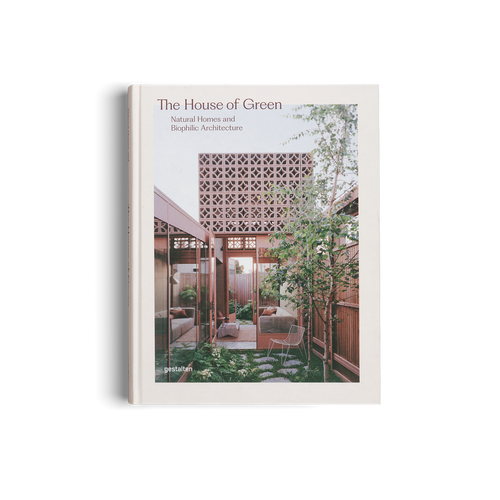
09/2020 architecture & interior
Before arriving in the skillful hands of a craftsman, each plank of wood begins as part of a tree—itself already a magnificent work of architecture, explains Jonas Bjerre-Poulsen. When modeled by architects and craftspeople to support human life, wooden architecture can be considered as a second life for the tree, preserving its value for the future. If a tree has grown for 200 years, the material it provides us with should be used in a respectful, aesthetically durable, and sustainable manner.
Wood is patient and adaptable. It speaks of time and transience. Wood possesses narratives of what has endured long before us and it stimulates our senses most naturally. Wood possesses timeless beauty, with natural fibers that have genuine character, are flexible, and are adaptable to varied usages and environments.

Ogimachi House by Tomoaki Uno Architects, designed for rest and recovery. (Photo: Benjamin Hosking, Out of the Woods)
Working with wood in architecture and design is a way to enrich our surroundings and simply enhance the quality of life. Wooden architecture creates understated expressions of timeless beauty that will appeal to us generation after generation. The traces of life in the wood are a humble reminder of our impermanence. Its inherent sense of harmony is something to celebrate and be guided by architecture and design.
Rosie Flanagan: We have been using wood to construct our homes and shelters for millennia; from neolithic longhouses to contemporary skyscrapers, this ancient and malleable material has proven itself suitable to the landscapes of both the past and present. Today, as the climate crisis worsens and the global population rises, could one of the oldest building materials on earth hold the key to designing a better future?
“We have to shift how we think about architecture,” says Vancouver-based architect Michael Green, “and how we think about buildings.” Like many, Green believes that paradigmatic change within architecture is necessary to reach sustainability objectives. It’s a change that begins with commitments to ethical, sustainable materials. “The building industry is responsible for 40 percent of global climate emissions,” Green explains. “The transportation sector is only 27 percent—so why are we only talking about cars?”

This Norwegian minimalist home is intertwined nature is further underlined by its material palette. The floor becomes wall and wall becomes floor in an ever-changing world of concrete, wood, and subtle, warm tones. (Photo: Jonas Bjerre-Poulsen, Out of the Woods)
Many materials common in construction dramatically contribute to the carbon footprint of the industry. Production of concrete, the most widely used building material on earth, produces 8 percent of the world’s CO² emissions annually. Increasing demand has led to a global shortage of one of concrete’s critical composite ingredients: sand—currently the most consumed natural resource on the planet after water.
Wood remains the only naturally regenerative material that we can harvest without loss of biodiversity or carbon storage, and with which we can build on a grand scale. Recent advances in engineered timber have provided us with a range of composite wood materials—like CLT (cross-laminated timber)—that have comparable strength-to-weight ratios to steel and concrete, with far lower emission profiles.
Such material advances are particularly significant when you consider the state of things to come. By 2050, the UN predicts that the global population will reach 9.8 billion, with two-thirds of those people living in densely populated areas. Streetscapes in cities will go from the horizontal to the vertical. Tall buildings—and buildings on top of extant tall buildings—will be the norm.

This bespoke two-apartment block by GG-LOOP in Amsterdam is an innovative piece of contemporary design, using its meticulously crafted layout to harmonize form and function. (Photo: Francisco Nogueira, Out of the Woods)
Accordingly, legislation and building codes are expanding to include provisions that will allow mass-timber buildings to rise to new heights from 2021. Lightweight, strong, durable, and fire-resistant, CLT is considered among the most environmentally friendly options for such large-scale constructions. High-rises built from mass timber store CO² rather than producing it, helping mitigate climate change. The first skyscrapers constructed from timber have already started to emerge, and we are likely to see more.
Wood connects us to the natural world from which we are so often removed; it is a quality our forebears understood inherently, as generations of people created climate-responsive homes from local, available materials. Designed in symbiosis with the landscape, vernacular structures like Swiss chalets and Norwegian mountain huts are being referenced and reimagined within the contemporary realm. Likewise, historical methods of construction such as Yakisugi, a centuries-old Japanese technique used to finish buildings, are proliferating, as innovative architects look to the past to create the future, and to nature for design inspiration.

Designed by architects Chris and Fei Precht, the Farmhouse encourages residents to grow their own food in a CLT. This is a case study to show what future cities might look like. Unique homes that feel close to nature, despite their proximity to urban centers. (Photo: Studio Precht, Out of the Woods)
The buildings featured in this book transcend style and geography—from treehouses in Costa Rica to standing camps in Tasmania and healing homes in Japan—in an exploration of the myriad ways in which we live and work with wood. New ways of building are rising out from one of nature's oldest materials, it has the ability to offer a sustainable alternative to architecture and construction.
Wood has been around for thousands of years, but in recent years it has developed as a suitable building alternative to more carbon consuming materials. Explore the innovative world of contemporary wooden architecture through Out of the Woods.













